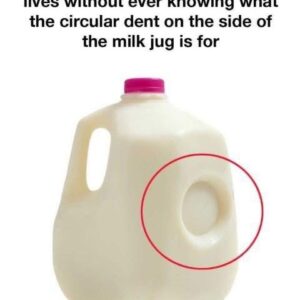The journey from this controlled environment to the supermarket foam tray is a world away from the traditions of a local butcher shop. After leaving the farm, the birds are transported in large crates designed to maximize efficiency rather than comfort. They are trucked to processing plants that can span multiple city blocks, built to move animals through the system as quickly and uniformly as possible. Inside these facilities, speed and standardization are paramount. Many of these operations are capable of handling hundreds of thousands of birds per day, an industrial scale that is difficult to fully grasp until one has seen it firsthand.
Upon arrival, the chickens enter a tightly choreographed system that has been perfected over decades to meet the demands of mass consumption. The goal is to produce chicken that looks, weighs, and cooks the same each time a customer buys it. The birds are stunned, slaughtered, defeathered, and cleaned in a series of automated steps designed to ensure hygiene and efficiency. Workers stationed along the line monitor for defects or irregularities, but much of the process relies on mechanized precision. Conveyor belts carry the birds through the various stages, moving at a pace that leaves little room for anything except the narrow tasks each worker is responsible for. Although controversial at times for labor and animal-welfare reasons, this system allows companies to meet the enormous volume demanded by modern grocery stores and fast-food chains.
One of the most critical steps in this industrial process is chilling. After evisceration and cleaning, the chicken must be rapidly cooled to a safe temperature to prevent bacterial growth. In the United States, the most common method is immersion chilling, which involves submerging the birds in large cold-water baths treated with sanitizing agents. These tanks can contain tens of thousands of gallons of water, constantly circulated and kept near freezing. As the bodies move through this frigid environment, they not only cool rapidly but also absorb water—sometimes several percentage points of their weight.
This water absorption, though legal and widely practiced, has become a point of contention among chefs, consumers, and advocates of more traditional methods. From a food-safety perspective, immersion chilling is effective at reducing potential pathogens. From an economic standpoint, it increases the processor’s yield; the absorbed water becomes part of the final weight sold to the consumer. But from a culinary standpoint, the practice can noticeably affect texture. When cooked, water-logged meat often weeps liquid in the pan rather than searing, leading to steaming rather than browning. This can dilute natural juices, resulting in chicken that tastes blander and has a softer, sometimes mushier texture compared to air-chilled or locally processed birds.
Once chilled, the chickens move on to an intricate butchering system that combines machine precision with human skill. Automatic cutters divide the carcasses into the familiar parts—breasts, thighs, wings—while workers trim edges, remove imperfections, and sort the cuts into bins headed for packaging. It is at this stage that the chicken begins to resemble what shoppers see in store refrigerators: neatly trimmed fillets, boneless thighs, drumsticks lined up in rows, all standardized in size and shape. This consistency is no accident; it is the result of breeding, feeding, and processing practices designed for uniformity.
After sorting, the cuts are placed into trays made of lightweight foam or plastic and wrapped tightly in film. Labels are applied with information about weight, price, and sell-by dates. These packages then enter refrigerated storage units before being shipped to distribution centers and eventually supermarkets. By the time the chicken appears on a grocery shelf, days may have passed since the bird left the farm. Yet the product remains visually pristine, with its pinkish color and tidy presentation giving an impression of freshness and purity.
This final appearance, however, masks the long and highly engineered process behind it. What consumers see as a simple, affordable staple is the end result of an industrial system optimized for cost, reliability, and scale. It is a system that feeds millions and has made chicken one of the most accessible proteins in the world, but it has also distanced consumers from the origins of their food. In earlier eras, families would pick out a bird from a local farm or buy directly from a neighborhood butcher who knew the farmers personally. The meat was not uniform, and availability ebbed and flowed with seasons and local production. But the flavor was often richer, and the connection to the source was far more tangible.
Industrial processing has, in many ways, traded these qualities for predictability. Chicken today is plentiful year-round, inexpensive compared to many other proteins, and easy to prepare regardless of cooking skill. Yet these conveniences come with subtle costs. The accelerated growth of industrial broilers, combined with immersion chilling and mechanized butchering, can produce meat that lacks the density, aroma, and depth of flavor found in birds raised and processed on a smaller scale. Many chefs describe supermarket chicken as mild to the point of blandness—something that requires marinades, seasonings, or sauces to give it personality.
None of this is to say that industrial chicken is inherently bad; for many families, its affordability and accessibility are essential. But understanding how it arrives on store shelves helps consumers appreciate the difference between mass-produced and traditionally raised poultry. It also explains why some people are willing to pay more for air-chilled birds, pasture-raised chickens, or meat purchased from a local butcher. Those options reflect a different philosophy—one that values flavor, texture, and transparency over uniformity and cost savings.
By the time the foam-tray package lands in a shopping cart, the chicken has passed through a vast, unseen network of farms, factories, machines, and labor. The result is a product that is consistent, readily available, and affordable, but one that has often sacrificed texture and depth of flavor along the way. Understanding this journey allows consumers to make more informed choices, whether they prioritize convenience or seek out alternatives that bring them closer to the food traditions of the past.




